An Education:
The shaping of Elizabeth I, through childhood events and academic pursuit
By Ashlie Jensen from Being Bess
Elizabeth I of England is remembered for many reasons, both political and personal. One of the queen’s qualities which was remarked upon as frequently in her own life time as it is today, was her intelligence. Wit and wisdom were important qualities for the early modern educated man and woman to possess, but Elizabeth’s intellect surpassed some of the most brilliant minds of her age.
So how did the young Elizabeth come to be the queen who would one day take the Polish ambassador by surprise by suddenly reprimanding him in fluent Latin? How did she become the woman who was as at ease composing original works on the virginals as she was addressing her privy councilors on matters of state? What was her education, and who were her intellectual influences, and how did she apply her knowledge to her role as queen? And certainly the personal childhood traumas she experienced had to shape the woman she would become, by either consuming her or making her stronger.
Historian Alison Plowden suggests that the Princess Elizabeth’s first conscious memory took place when she was two and a half years old (48). The pivotal event took place in early January of 1536, when the displaced Queen Catherine of England died at Kimbolton Castle. She had been forced to live in obscurity as the mere Dowager Queen Catherine, and widow of Arthur Tudor, her first husband and King Henry’s brother. The news reached the court on a Saturday, and the King was heard to rejoice openly, “Thank God, we are now free from any fear of war!” which he had half expected from Catherine’s relatives and supporters, whom she had kept in contact with, imploring them to defend her. In what is now an infamous Tudor event, King Henry and Queen Anne clad themselves and their daughter in yellow, the color of happiness, and paraded her through the court. The entire spectacle of Elizabeth held aloft on her father’s shoulders as the undoubted heir was culminated with feasting and dancing. It is quite possible that this was Elizabeth’s first memory, and also the last time she could ever recall the security of being surrounded by a loving family. Her mother would be executed a mere three months later. Elizabeth would have to wait over two decades before she would be cheered for again.
There were many reasons Henry conspired to not merely divorce, but to execute his own wife on trumped up charges. It is important to state here that one of the reasons was to bastardize his own daughter. What a profound effect this knowledge previously had on Mary, the first victim of such horrid legal language, and now Elizabeth! Both Mary and Elizabeth were to be addressed as mere “ladies” rather than princesses royale.
Henry was not doubting his paternity; after all, he might have needed to use his daughters for political gain in the future, though few royal dynasties would jump at the chance to marry one of their heirs to a bastard princess of the precarious Tudor dynasty. He simply wanted it decreed that they were not lawfully begotten. As Plowden observes about Henry, ‘For one so set on establishing the succession, the King was prodigal in disposing of possible heirs’ (55). In a case of morbid irony, Anne would die for the false conviction of adultery, and by the ruling of the courts she was simultaneously decreed to have never even been Henry’s lawful wife! Elizabeth was two years and eight months when the axe fell on her mother’s neck. “Elizabeth would…never be able to remember a time when she had not known that her mother had died because her father ordered it” (Plowden, 63).
Much like her half-sister Mary before her, Henry selectively forgot about Elizabeth. He was consumed by his conviction that his third wife, Jane Seymour, whom he wed the month after Anne’s death, would not only make him happy, but deliver him a son.
Elizabeth may have been forgotten by her fair-weathered father, but she was not neglected by those who Anne had entrusted to care for her, chief among them Margaret Bryan. Lady Bryan petitioned tirelessly for someone, anyone, to turn the king’s attention, even if only momentarily, to the plight of his little girl. In August of 1536, Bryan wrote to Cromwell of the disorder that had descended on the princess’s household now that she was a bastard and the king neglected to pay those in her service or provide for household supplies. She also reported the squalor Elizabeth was living in, writing ‘she has neither gown nor kirtle nor petticoat nor linen for smock’ (62).
Bryan’s letters stopped just short of begging for proper food and clothes. A lesser woman would have not have cared much whether Elizabeth got the care befitting a child of her status or if she merely faded into oblivion, as long as she herself got paid, but Lady Bryan was no such woman. A stellar reputation had preceded her even before her appointment to Elizabeth’s household, and she was not about to sully it now. Still, underlying her sense of duty, it is clear from contemporary sources and documents that Lady Bryan genuinely cared for Elizabeth. How could she not, for even in toddlerhood Elizabeth was documented by multiple sources to be a vibrant, precocious and eloquent child. While many royal children were given high praise, those who would encounter Elizabeth in her early years, particularly foreigners with no previous experience of her character, capture her in their writing as an exceptionally captivating young lady who had taken them by surprise.
Over time, Bryan succeeded in convincing the king to grant much of what she asked for. Elizabeth’s household was now smaller, and her standard of living greatly reduced from when she was a legitimate princess, but at least she was no longer neglected.
October 12th of 1537 brought about the birth of Elizabeth’s brother Edward, the long-awaited male heir to the Tudor dynasty. Elizabeth and Edward would soon come to share many of their early educational experiences, as well as the Protestant faith. At Edward’s christening, a four-year-old Elizabeth carried her brother’s baptismal robe in the ceremonial procession to the church, while being carried in the arms by one of her brother’s uncles, Edward Seymour. Interestingly, also in attendance was Elizabeth’s maternal grandfather, Thomas Boleyn, who must have gazed sadly at the granddaughter he would never be allowed to know.
Jane Seymour would die, probably of puerperal sepsis, on October 24th. Once again, without a good-natured queen to intercede on her behalf, Elizabeth would be forgotten by her grief-stricken father, lying in wait until the time when she would be drawn back into favor at court.
Still, at least now Elizabeth’s person was financially cared for by the crown, and her emotional wellbeing was being cultivated by her staff. Margaret Bryan had by now been transferred to young Prince Edward’s service, and her duties were taken over by two remarkable women who would remain stable influences in Elizabeth’s life for decades. The first was Blanche Parry, Elizabeth’s former cradle-rocker, who took on other household duties now that her charge had outgrown her baby bed. The second was the determined, protective, and opinionated Katherine Champernowne, later Kat Ashley, who had joined Elizabeth’s household per recommendation of Thomas Cromwell in June of 1536. Kat would act as Elizabeth’s surrogate mother, best friend and protector through her dangerous teen years and well into her happy reign. Kat only left Elizabeth’s service when she died, leaving the queen inconsolable for a time.
Like Lady Bryan before her, Kat Champernowne would write forceful yet tactful letters requesting more money for the princess and for her own wages. Kat would prove herself worthy of a more significant position, and she was promoted to Governess (Plowden, 67). Plowden proposes that the Lady Mary was some sort of a stable influence in Elizabeth’s life. While it was true that Mary, who adored children, warmed to her much younger half-sister after the death of Anne Boleyn, it could also be argued that she was never really present enough to have been a real influence. While Henry’s daughters sometimes stayed together, for the most part they maintained separate residences, especially since Mary was an adult with her own following. Mary did give gifts and wrote letters to both her siblings over the years, but neither shared her personal values or her religion.
It can be surmised that Kat Champernowne-Ashley, as Governess, was the one who began Elizabeth’s formal education, teaching her to read and write, as well as basic manners and perhaps some dance. We know that Elizabeth took to all forms of music like a fish to water, and enjoyed spirited dances into her old age. Elizabeth’s comfort with reading and writing Latin in the years to come, as well as being fluent in many other languages, would suggest that she began linguistics lessons very early as well. Modern studies show that the younger a child is when they learn a second language, the easier it is for them to retain other ones.
Already by the age of six, before any formal schooling had begun, Elizabeth was a shining asset to the Tudor monarchy. She often demonstrated to her elders a keen understanding of the expectations of a courtier, no doubt a result of her instruction from Kat in manners and also her own personal experience of the fickleness and flattery abound in her own father’s presence. Children are more perceptive than adults give them credit for, and Elizabeth was forced to witness and understand things far beyond what most her age were experiencing.
When Thomas Wriothesley visited Mary and Elizabeth, who were both staying at Hertford Palace for a time, he wrote about his impressions of the ‘ladies.’ After conveying King Henry’s message, ‘…that his Highness desired to hear of her health and sent her his blessing. She (Elizabeth) gave humble thanks, enquiring again of his Majesty’s welfare and that with as great a gravity as she had been forty years old. If she be no worse educated than she now appeareth to me, she will prove of no less honour to womanhood than shall beseem her father’s daughter’ (Plowden, 68).
The following month, it was recorded that Elizabeth gave her brother a customary New Years Day gift: a cambric shirt that she had sewn and embroidered entirely by herself. In time Elizabeth would master the humanist education expected of a Protestant princess, as well as the more traditional pursuits of sewing, embroidery, musical instruments, and dance that had been deemed important for noblewomen to master starting in the Middle Ages.
By 1539 Henry was married once again, to Anna of Cleves, only to have it annulled the following year. The very same month that Henry had his marriage to his fourth wife dissolved, he wed the flirtatious, pretty and incredibly naïve Katherine Howard. A young girl caught up in her rapid rise to power, Queen Katherine’s feelings of invincibility and her confidence in the king’s affections led her to be unfaithful with multiple men. In 1542, the day before St. Valentine’s Day, King Henry’s “rose without a thorn” was executed for adultery at the block, sharing the same fate and burial site as her cousin before her, Queen Anne Boleyn. Much has been made of Elizabeth witnessing the rapid downfall of her young stepmother and her father’s unfathomable cruelty. Elizabeth certainly knew of Katherine Howard’s horrid display of desperation, running down the halls trying to reach her husband as he exited from his chapel, only to be borne away like a common criminal by armed guards. While it would be difficult to prove that this event or any other was the sole reason Elizabeth never married, (there were many reasons, both personal and political) it cannot be doubted that Katherine’s execution in Elizabeth’s peripheral world uncovered unresolved feelings of what her father had done to her mother so many years ago. While she never would have spoken of such things in public, in the safety of her household with Kat Ashley and Blanche Parry by her side, Elizabeth could have been honest with her feelings.
After the horrendous Katherine Howard episode, the Tudor children re-collected themselves from yet another upheaval in their lives. Whereas Mary was an adult and more able to deal with the uncertainty and carnage that surrounded her, Elizabeth and Edward were still very young, and they drew strength and happiness from each other. Their spheres were overlapping more and more now, and their affection for one another was evident to all who witnessed them together.
Edward’s education was befitting of a prince of Europe, and his proud father wasted no money or resource to procure him the best academics and theologians of the day. Dr. Cox, the provost of Eton College, was facilitating Edward’s lessons at an early age, and when Elizabeth resided under the same roof as Edward, she undoubtedly also benefitted from Dr. Cox’s tutelage (Plowden, 73). Though Elizabeth and her brother had access to the best teacher’s available, it is obvious that they themselves were above the average intelligence of their peers. These young children were reading Greek and Latin and completing their own classical translations long before they were teenagers.
Their half-sister, Mary, had enjoyed some semblance of an education herself. Catherine of Aragon had consulted Juan Luis Vives as the mentor for Mary’s moral and religious development. While Vives encouraged Latin, theology and some classics, he maintained that a woman’s primary role was as wife and mother, and her education was merely to make her better at these roles. These were beliefs that Catherine herself held and wanted to impart upon her daughter. Plowden sums up the siblings’ differing educations best, saying, ‘Edward and Elizabeth were beginning, inevitably, to represent the future, just as Mary must always be identified with the past’ (75).
In July of 1543, Henry VIII made his sixth and final marriage to Katherine Parr, a twice-widowed woman who had played the nursemaid in both of her marriages. She could not have been a more perfect choice for Henry in the twilight of his life. Katherine Parr was older than any of the king’s previous brides, and with this age she brought maturity and patience to the marriage and gave stability and love to her stepchildren. Katherine Parr was an adherent of the new religion, and her habit of rescuing persecuted Protestant reformers, like Anne Boleyn before her, got her into trouble more than a few times with the king and his council. Of all her stepchildren, Elizabeth would benefit the most from Queen Katherine Parr’s attention. Both were equally besotted with one another. Queen Katherine found in Elizabeth a stepdaughter who could only have been more like her if she had given birth to her herself. And Elizabeth, having already surpassed the loyal but intellectually inferior Kat Ashley, finally had a strong, learned, well-spoken lady to look up to.
Queen Katherine set to work restructuring the children’s schooling. In early 1544, she had Sir John Cheke, religious reformer and Regius Professor of Greek at Cambridge take over Prince Edward’s instruction. With him came Roger Ascham and Anthony Cook. A few months later, 11-year-old Elizabeth met her new schoolmaster William Grindal, also a Greek scholar and Cambridge man, and a former pupil of Ascham (Plowden, 75). Elizabeth’s mother had always favored Cambridge men over Oxford men herself, and would no doubt have been pleased that her daughter was learning from those whom she considered of the highest academic caliber.
Elizabeth moved from studying classical languages to the romantic languages of France and Italy. Her earliest surviving letter, written in Italian, was addressed to Katherine Parr in 1544, the same year that she and Mary were restored to the succession. However, both were still not legitimized. The letter is full of maturity and poise, and was most likely written to demonstrate to her stepmother her growing grasp of a new language. The following year, on New Years Day, Elizabeth gifted her stepmother with a complete English translation of the lengthy and moralistic French text The Mirror of the Sinful Soul by Margaret of Navarre. Margaret was an acquaintance of Elizabeth’s own mother, a fact that Anne Boleyn biographer Joanna Denny believes Elizabeth no doubt knew herself. Elizabeth’s translation was covered in a beautifully embroidered cover, with the initials “KP” incorporated, and worked in the princess’s own hand.
Elizabeth continued her studies, now mostly separate from her brother, until her world was turned upside down once again in 1547, when her iconic father died. Elizabeth was just 13. Edward would follow his father to the throne, and in his minority the kingdom would be governed by several men, but mostly by his uncle Edward Seymour as Protector, and newly created Duke of Somerset. Elizabeth had the good fortune to be left in the care of her stepmother, who would continue to guide her as she finished her education. Elizabeth would live under the Queen Dowager’s roof at several royal houses, but mostly at Chelsea, and her education there would not only be academic, but also in more of the harsh realities of life.
Katherine Parr married her stepson’s other uncle, Admiral Thomas Seymour, something she had probably been planning to do before the king had taken a liking to her. The Admiral was a charismatic, tempestuous, and undoubtedly narcissistic individual, constantly scheming to gain the power that his brother Somerset enjoyed, through a combination of schmoozing and illegal activity. He was Katherine Parr’s opposite in every way, and, blinded by love, she chose to see the best in him. At thirty-four, she had been married three times, but never to someone whom she truly adored. She also hoped for her own natural child, and she believed that Thomas Seymour could be her happy ending. Still, despite the Queen Dowager’s plans for her future, her love for Elizabeth never wavered, even in the face of her own husband’s seemingly playful but truly inappropriate advances toward the fourteen-year-old princess. There was talk at the time that Seymour intended to put aside Katherine Parr, if a more advantageous marriage to either Mary or Elizabeth became a possibility. We now know that he set his men to investigating the properties and income endowed to both princesses by the crown, but of course Elizabeth knew none of this at the time.
While Elizabeth endured Thomas Seymour bursting into her rooms in the morning, tearing back the curtains of her bed, and tickling her until she could get away, with the conflicting emotions of amusement and fear, she never once neglected her studies. This was a remarkable achievement, as the Admiral’s attentions became less cheeky and more sexual as time went on, surprising her in the halls, and heckling her servants for access to her apartment at all hours. Katherine’s head began to rule over her heart as her husband’s emboldened behavior became too difficult to ignore. In an effort to prove to his wife that these romps with the princess were all in good fun, he enlisted Katherine as his “accomplice”, having her assist in holding Elizabeth down as he slashed her dress in the garden, an incident the princess recounted to Kat Ashley in great detail. This confusing involvement of the once protective and level-headed Katherine Parr is difficult to comprehend, but if interpreted through a modern lens it makes more sense. While there is no contemporary record of Elizabeth ever being molested by Thomas Seymour, his attentions were no doubt sinister. And, it is the method of operation of a predator to take advantage of those who he is close to, and to involve his partner in his own dubious activities. Thomas Seymour did both.
Remarkable given the distractions at hand, Elizabeth studied daily under Master Grindal, while also keeping up a frequent correspondence with Roger Ascham, who was in awe of the Tudor princess’s intellectual capabilities. His opinion held a lot of credibility, as Ascham had long been surrounded by the best minds in England. His letters to Elizabeth are filled with eloquent expressions of praise. In his celebration, and perhaps envy, of Grindal and Elizabeth’s working relationship, Ascham said he did not know ‘whether to admire more the wit of her who learnt, or the diligence of him who taught’ (Ascham’s Works). Ascham was no doubt hoping for employment in this rising star’s service, so he took up writing to Mistress Ashley as well, complementing her sound judgment in raising her charge. Ascham went out of his way to repair Elizabeth’s pens and send them back to her, as well as gift an expensive Italian prayer book (Plowden, 89). Elizabeth was likely in some form of acquaintance with another young Protestant academic in her stepmother’s household: her relation, the 10-year-old, ill-fated Lady Jane Grey.
At holidays, Elizabeth would visit her brother’s court, and it was evident to all who encountered her and recorded their observations, that this bright young mind was destined for some sort of greatness, though just how great they had no way of knowing. Elizabeth enjoyed a respite from the confusing atmosphere in Chelsea during Christmastide, spending time with her brother, and perhaps catching up with old friends like Robert Dudley, later her Master of the Horse and Earl of Leicester.
Tragically, Elizabeth would lose her tutor, Master Grindal, to plague. It was Elizabeth who nominated his replacement. On February 12th, Ascham wrote joyfully to John Cheke that the princess ‘is thinking of having me in the place of Grindal’ (Ascham, Works). In the spring of 1548 Ascham was able to obtain leave from St. John’s College, Cambridge, to join the Queen Dowager’s household in Elizabeth’s service (Plowden, 93).
While Elizabeth’s education had thus far been equal to the education of other European princesses, under Ascham her education could finally match her own unique potential. Everything that can be read on the subject shows that Ascham understood the possibilities of Elizabeth’s mind implicitly, and he was excited to test its limits, or lack thereof. Ascham, as well as Katherine Parr, thought it necessary that Elizabeth have an equally balanced classical and modern evangelical education.
Ascham helped Elizabeth to perfect her classical languages through his famed method of “double translation.” For instance, he would present her with the original texts of Demosthenes or Cicero, having her turn them into English, and then translating them back into their original languages (Plowden, 93). Elizabeth spent her mornings reading from the Greek New Testament, followed by a study of classical orations, and Sophocles’ tragedies. Ascham believed that his selections would help Elizabeth to ‘gain purity of style, and from her mind derive instruction that would be of value for her to meet every contingency of life.’ After noon, Elizabeth would study Cicero, and some Livy. Ascham also supplemented these famous works with St. Cyprian, and Melanchthon’s Commonplaces, which he considered ‘best suited, after the Holy Scriptures, to teach her the foundations of religion, together with elegant language and sound doctrine’ (Ascham, Works).
Scarcely two months into Ascham’s employment, the Queen Dowager became pregnant with Thomas Seymour’s child. She was in her late 30’s, a precarious age to have a first child in the 16th century. The queen was overjoyed, and a little frightened over her new condition. But the queen’s happiness was interrupted when apparently Thomas Seymour got far too friendly with Elizabeth; He was overseen grabbing and holding her in his arms in the garden. Elizabeth had long been navigating a minefield of a stepfather who straddled the line between caring and dangerous, and a stepmother who confusingly condoned her husband’s disturbing behavior. However exactly Elizabeth wound up in the Admiral’s arms, we can never know, yet it should be remembered that she had been daily sorting through conflicting messages from the people she trusted, as to what to do with the Admiral’s attentions. Some days Mistress Ashley thought it wise to entertain the Admiral’s advances, other days she told the Admiral off for being too familiar with Elizabeth. Some days Katherine looked on in disapproval at her husband’s antics, and other days she participated in them. Ultimately, Elizabeth was left to make sense of it all herself; she would later come to bitterly regret her part in the incident when she was sent away to live with Katherine Parr’s good friends Sir Anthony and Lady Denny, indefinitely.
Katherine may have sent her stepdaughter away, but she did not take the separation lightly, and her actions and surviving accounts of the matter suggest that she sent Elizabeth away as much for her own safety as she did for personal jealousy. If anything were to happen to Elizabeth’s person, her life would be ruined, and great punishment would be exacted upon her caregivers, the Queen Dowager and her husband.
From her new residence at Cheshunt with the Denny’s, Elizabeth wrote a heartfelt, apologetic letter to her pregnant stepmother. In it she expressed, ‘I was replete with sorrow to depart from your Highness, especially leaving you undoubtful of health: and, albeit I answered little, I weighed it more deeper, when you said you would warn me of all evils that you should hear of me; for if your Grace had not a good opinion of me, you would not have offered friendship to me that way, that all men judge the contrary.’
Elizabeth continued to thank her stepmother for her kindness and diligence in keeping an eye and ear out for all who sought to sully her reputation, something that Elizabeth would never again take so lightly because of this episode. She signed the letter, ‘Your Highness’ humble daughter, Elizabeth.’
Elizabeth would continue to write to her stepmother, and both Katherine and Thomas Seymour kept up correspondence with her at Cheshunt. Elizabeth became very sick in her time away from her family. Though all Henry’s children suffered from ill-health their entire lives, which some modern scholars have argued was a result of congenital disease, this particular illness seems to have been the onset of Elizabeth’s menstrual cycle, exacerbated by depression.
On August 30th, Katherine’s daughter, Mary Seymour, was born. Sadly, Katherine Parr was never to enjoy the happy life she had envisioned for herself. She fell gravely ill with “childbed fever”, or puerperal sepsis, and died, but not before finally expressing through her delirium all of her displeasure to Thomas for the pain he had caused her (Plowden, 100-101).
Elizabeth was understandably devastated at the loss of the woman she had idolized, but who had become all-too-human in her marriage to Thomas Seymour. Elizabeth was now without a protector, and the next chapter in her life would be far more dangerous than the first. Seymour would continue his unwanted advances toward her, and Elizabeth and Kat Ashley, as well as Blanche Parry’s husband Thomas, would be imprisoned and questioned about the Admiral’s intentions to determine whether they had been privy to a secret marriage plot. Elizabeth, of course, had not, though Kat had verbalized to Thomas Parry that the match could have been the end to all her charge’s problems. Elizabeth endured being interrogated day after day, by Robert Tyrwhit, in an attempt to implicate her in the Admiral’s plot for the throne. It was Elizabeth’s knowledge of state intrigue and her own poise that allowed her to navigate her inquisitor’s manipulations and scare tactics. In the beginning, Tyrwhit frequently reported his frustration with the princess. But eventually even he came to acknowledge some form of admiration for her bravery and loyalty to her friends. Elizabeth’s was able to ultimately ensure her own, Parry’s and Kat Ashley’s freedom. Thomas Seymour would not be so lucky, and he would loose his head for a variety of reasons: attempted kidnapping of his nephew, counterfeit money, and most severely, treason. Elizabeth would allegedly remark on his execution day, ‘This day died a man with much wit, and very little judgment.’
Elizabeth survived her sister Mary’s tempestuous reign and imprisonment in the Tower of London with the skills that life had taught her: self-preservation, skepticism, intuition and wit. Elizabeth would simply say that her safe deliverance to the throne was “the Lord’s doing.” As queen she not only drew from her life experiences, many of them tragic, but also her own rigorous education to make the best decisions for her beloved country. Elizabeth made England a super-power, brought back from the brink of obscurity due to the decisions made in each of her sibling’s reigns. Her achievements were many, and among them was Elizabeth’s continued commitment to the institution of learning. Under her rule, more grammar schools would be created than during any of the previous Tudor monarchs’ reigns, allowing for educational opportunities for children not of noble lineage. Elizabeth would personally support promising young minds through the system of patronage, like musicians Thomas Tallis and William Byrd, and writers Ben Jonson, Shakespeare, and Edmund Spenser. Elizabeth would also frequently visit English universities in support of higher education. Unsurprisingly, education for women improved in the Elizabethan era also, and it was no longer merely encouraged, but expected, for young women of the noble and upper middle class to be educated. Queen Elizabeth herself only employed learned young women as her personal attendants and servants.
Good Queen Bess and her Golden Age were created through a combination of lessons learned from harsh life experiences and academic study. The genesis of England as Empire no doubt started in Elizabeth Tudor’s formative years.
Select BibliographyThe Young Elizabeth, Alison Plowden
Anne Boleyn: A New Life of England’s Tragic Queen, Joanna Denny
The Life of Elizabeth I, Alison Weir

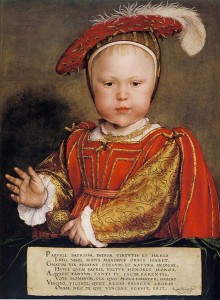
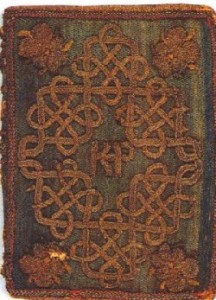
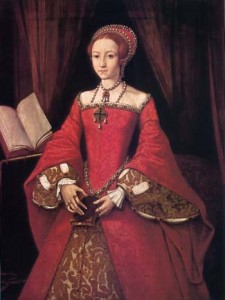
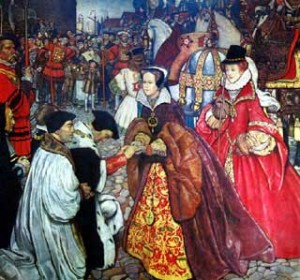


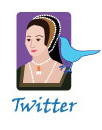




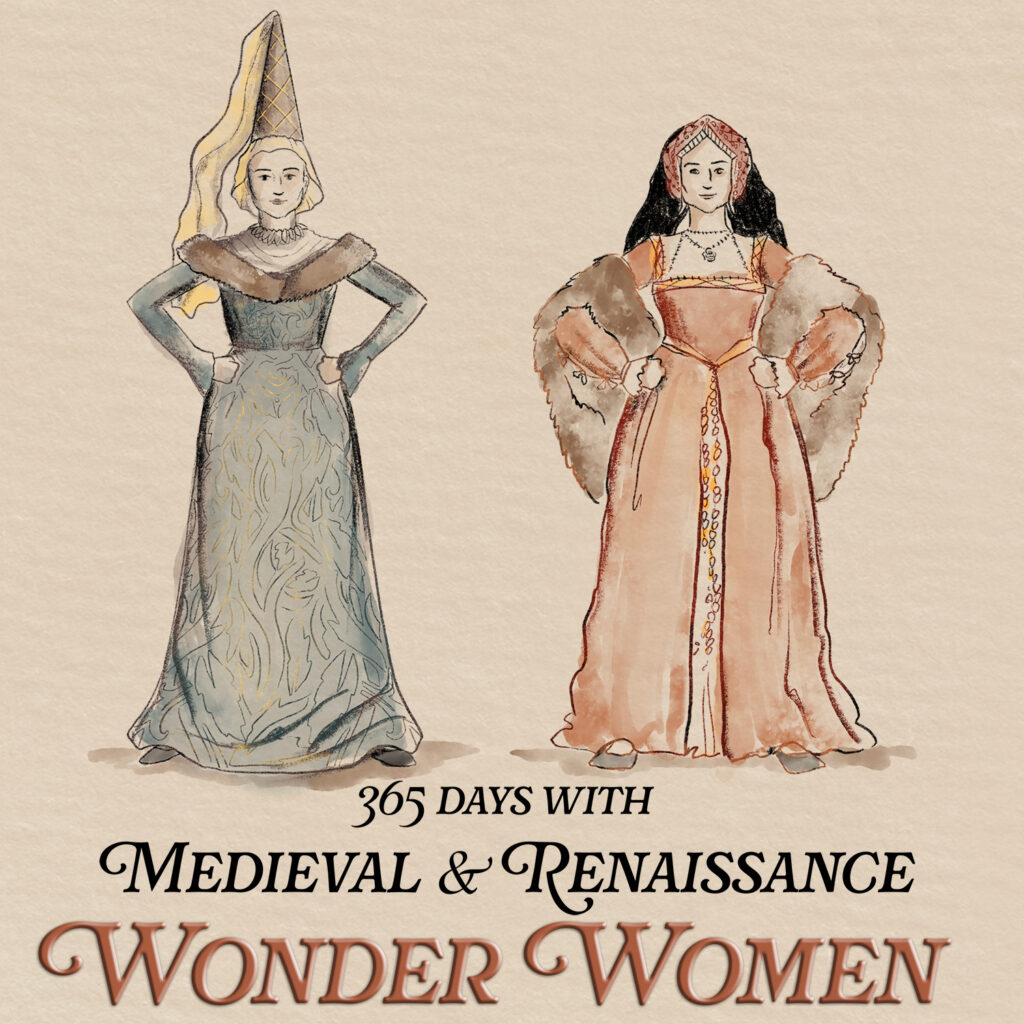
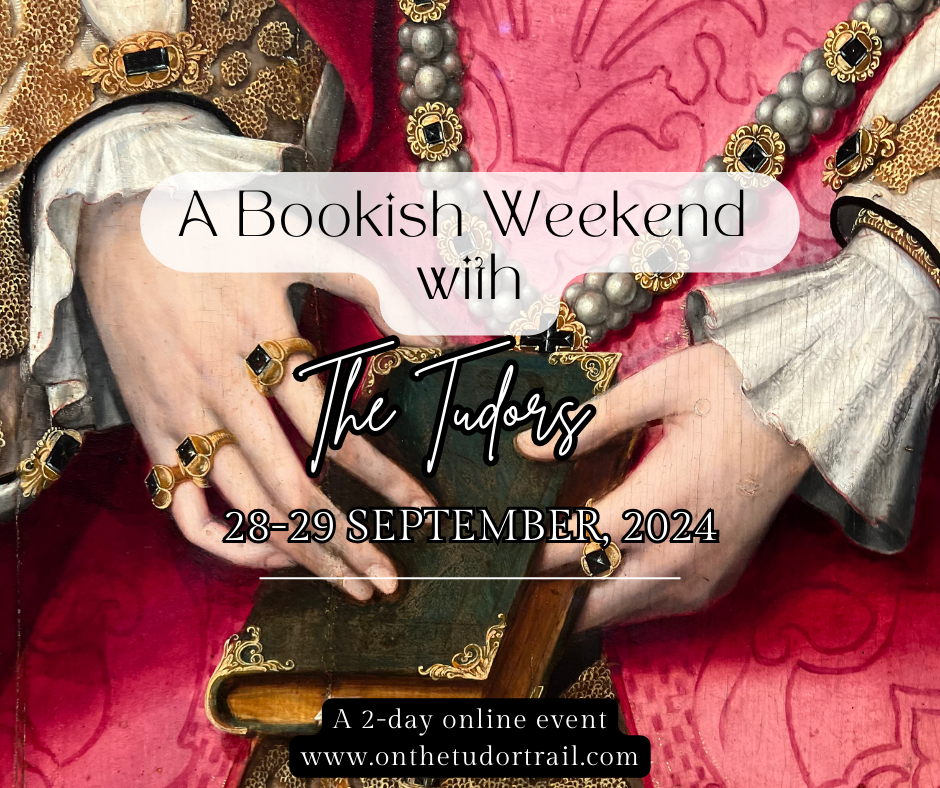
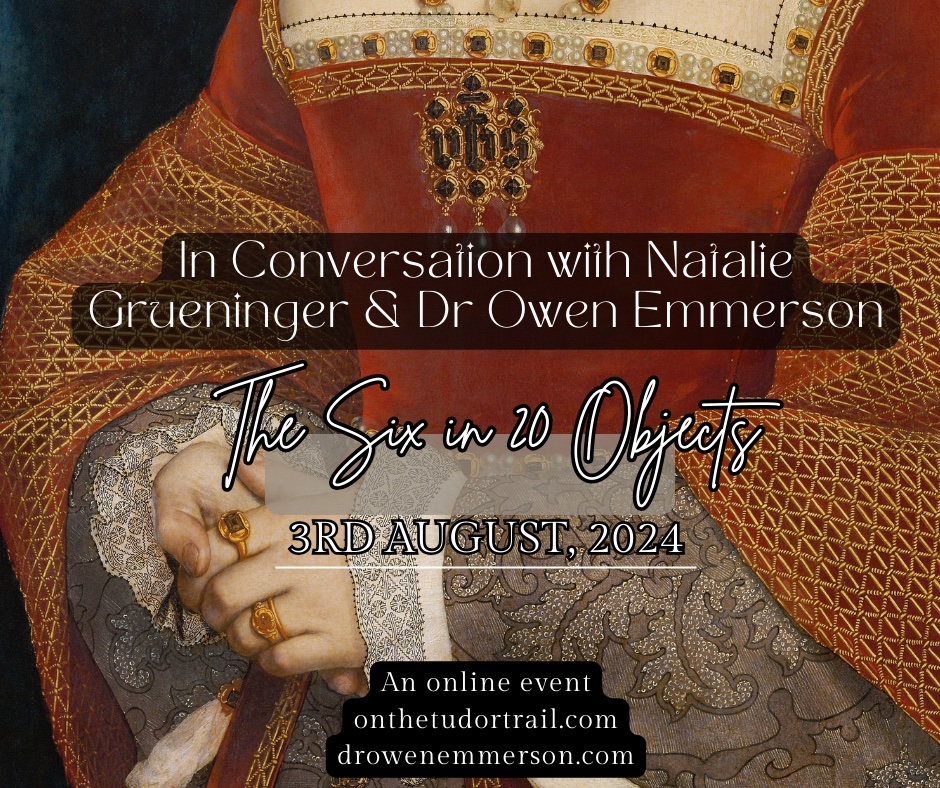
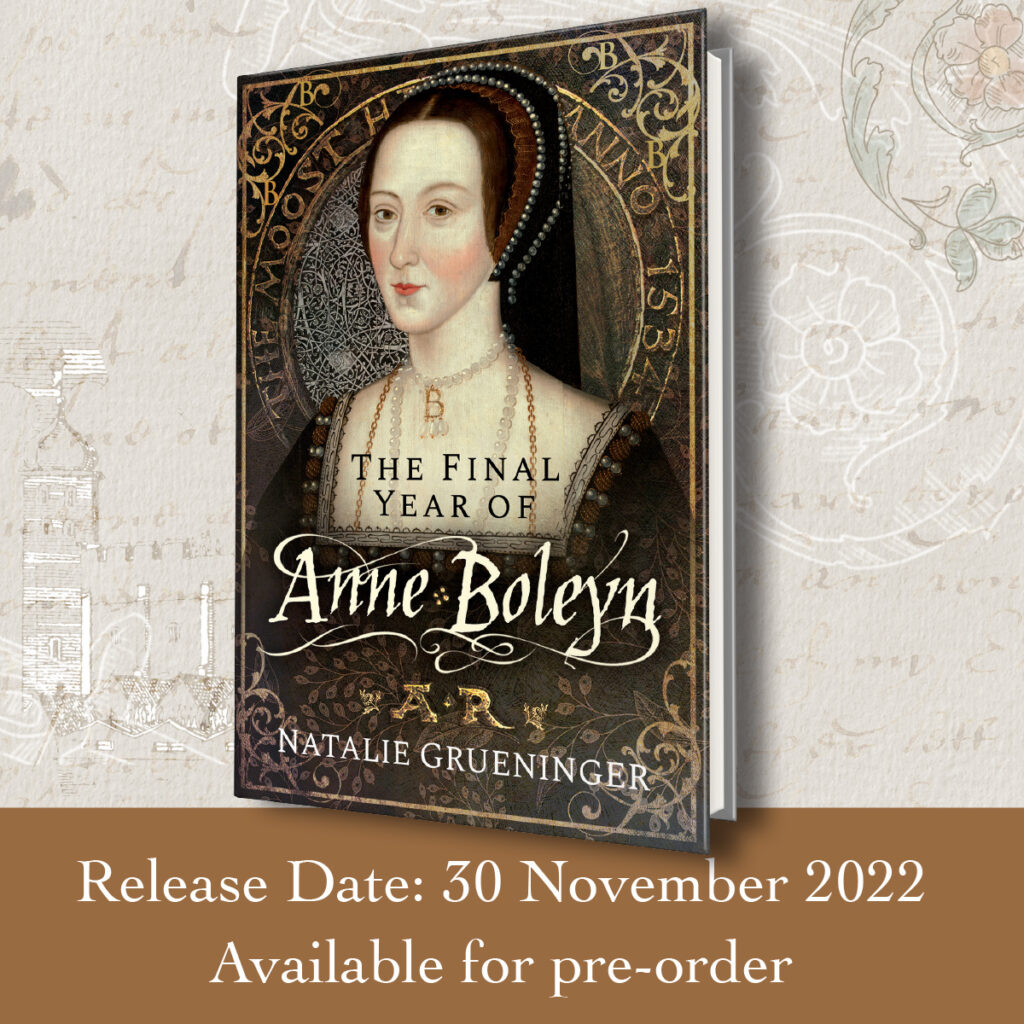
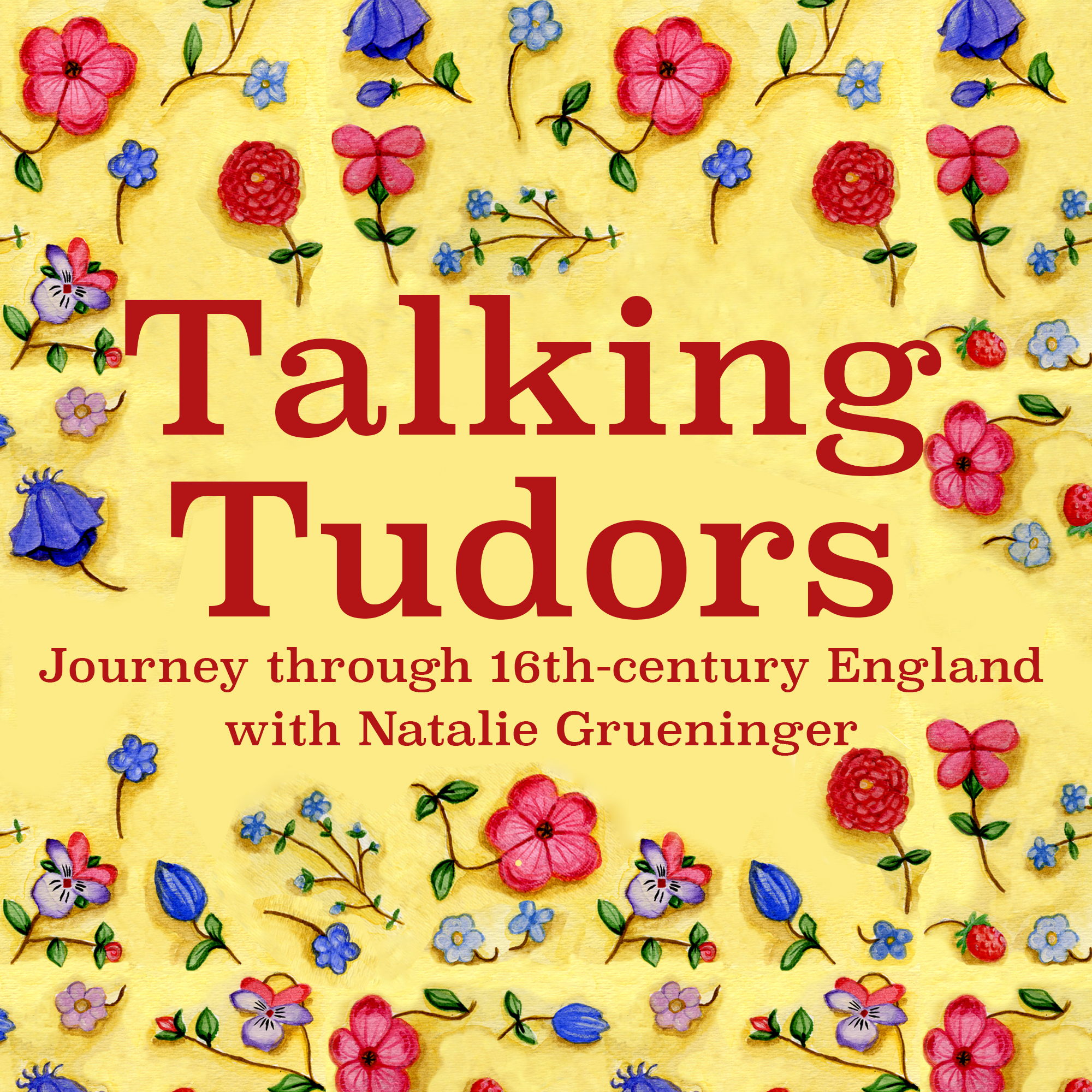

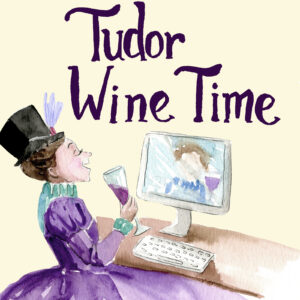
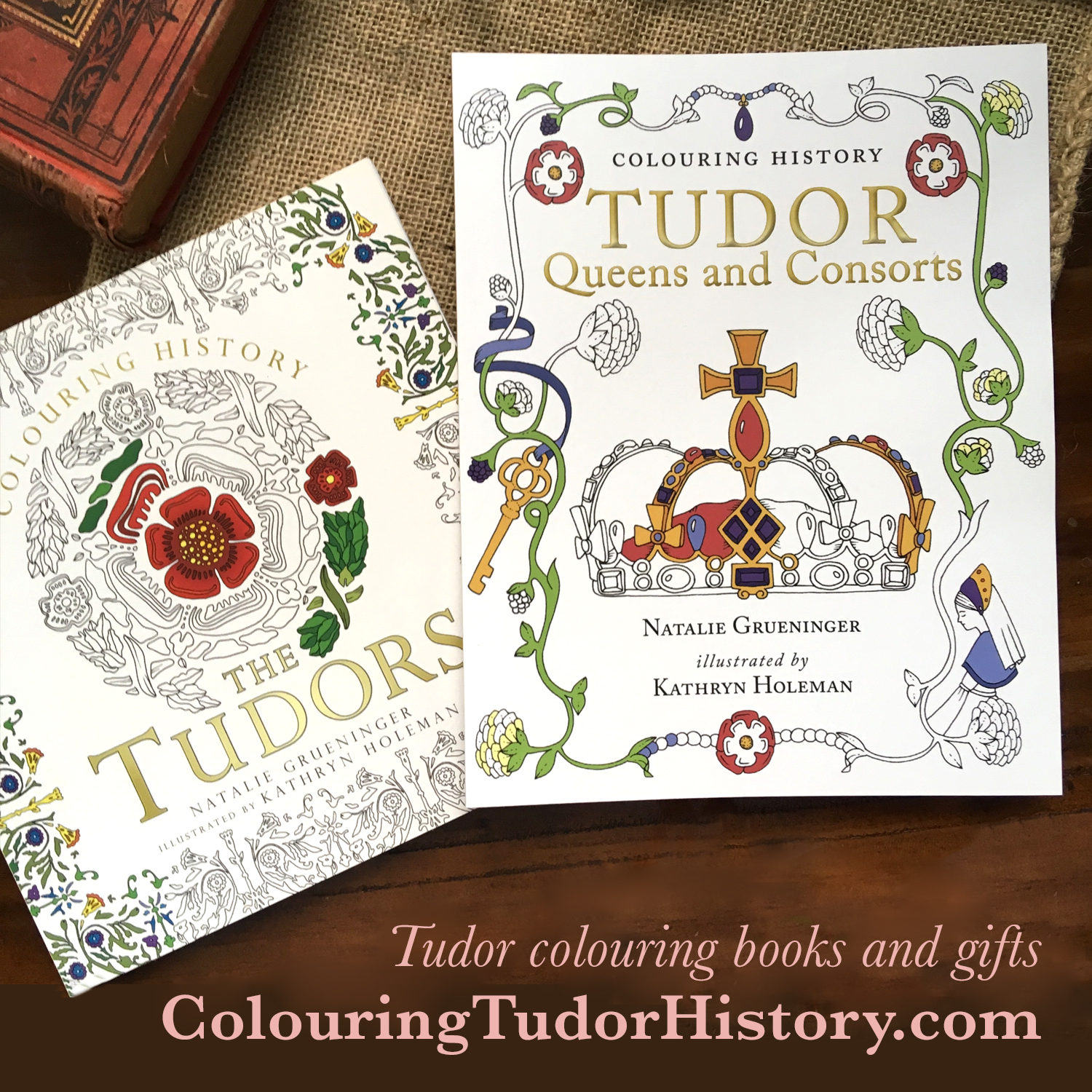

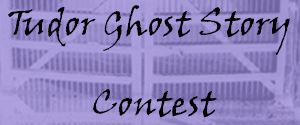

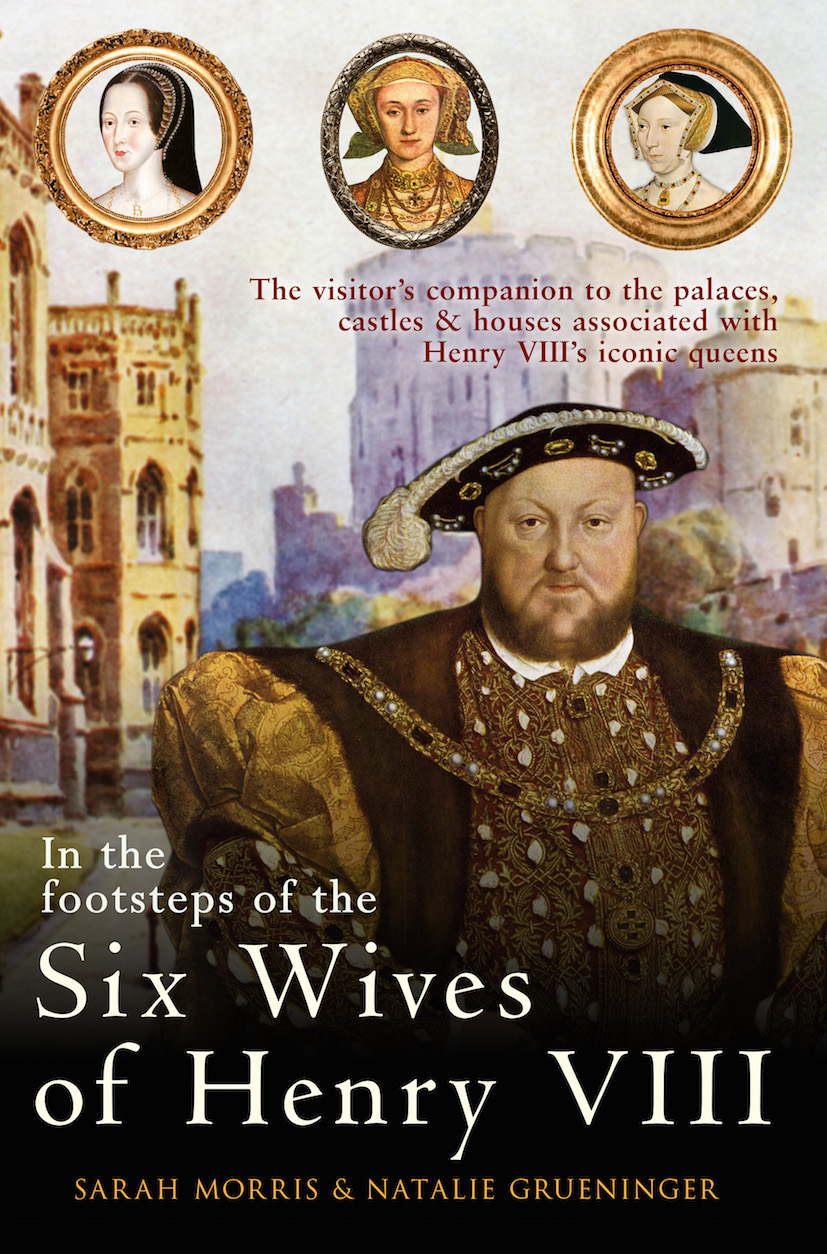
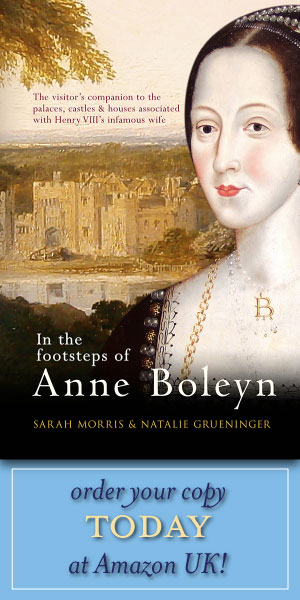
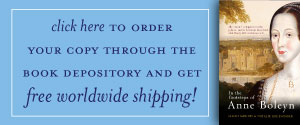
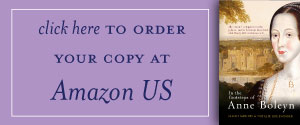
Wonderful article. Thank you.
May I just point out that Thomas Parry was not the husband of Blanche but most likely a cousin. Blanche never married – the inscription on the memorial of her tomb (written by herself) being ‘With maiden Queen a maid did end my life.’
(See the excellent biography, ‘Mistress Blanche,Queen Elizabeth’s Confidante’ by Ruth Richardson. 2007)
Thank you Robert, this is why it’s so wonderful to share our learning journey – we can all learn from each other 🙂
Well done!
Very informative piece on a real trailblazer. I have Liz on my computer bag. I like to think her lady learnedness rubs off on me and my laptop: http://www.cafepress.com/+pop_art_elizabeth_i_messenger_bag,251860318
Nice bag! 🙂
I second that! Very Cool.
Amazing! So full of information. Your research is so thorough. I have a gift to entertain people with my ramblings, and sense of humor …. but your articles are so worth staying awake after my bed time to read 🙂 Thanks for sharing. You inspire my thoughts.
Hello everyone,
I have been reading your comments and they all warm my heart and encourage me to keep doing what I am doing for Elizabeth’s legacy. I am humbled that you all took the time to read.
Mr. Robert Parry, I value your opinion and admire your work, and I appreciate you calling Thomas Parry’s relation to Blanche into question. Everything I have ever read has referred to Thomas as Blanche’s husband, but I was not familiar with the book you recommended and I will make it a point to obtain a copy. Also, having never visited Ms.Parry’s grave myself and read the epitaph (geographical constraints, living across the pond and all!) I had no knowledge of what it said. This is something I will look into, as I strive to be accurate in all things Tudor & Elizabethan, by using multiple sources, both primary & secondary. I look forward to investigating the matter and making changes to the article itself.
Joanne-how lovely to see you popped over here to read my article-you have always been so supportive of my blog!
Emma, I too have Bess everywhere for inspiration. In fact, her “Rainbow Portrait” is on my work computer desktop screen, keeping me company right now!
Bridgett, thank you for complimenting my research-that is the best compliment I could ever hope to receive! The fact that you stayed up late to read my article (sorry about how long it is; can you imagine it was initially 12 pages, and I cut it down to 6?) inspires ME!
Best to all; thank you for your positive comments and constructive criticism. It means the world to me.
As always, thank you to Natalie, a blogging powerhouse and an inspiration!
SEMPER EADEM
-Ashlie Jensen
http://beingbess.blogspot.com
Now I direly want to read the full twelve pages. I’ve been down a personal life of Elizabeth I rabbit hole and running up against a lack of academic credentials and library acsess.
Another great article–I’ll have to check out Being Bess website. Robert is quite right; Blanche Parry never married and I think Thomas was a distant cousin, not close. I have come to love Blanche Parry–she has a fairly big role in the novel I’m workingon–what a model for Elizabeth!
A most interesting article, but I wonder if you have heard of my ancestor, Giovanni Baptista Castiglione, who I understood to be Princess Elizabeth’s ItalianTutor. He was a humanist and came to be her tutor when she was about 13yrs old. He was imprisoned in the Tower of London 3 times by Mary on suspicion of aiding the Princess Elizabeth. He left his mark on the wall during his imprisonment in 1556. After Mary’s death he became one of Queen Elizabeth’s Gentlemen of the Chamber and was rewarded for his loyalty. He is buried in St Mary the Virgin, Speen.
I enjoyed this article BRAVO!!!!!
Thank you for this article. I watched the other boleyn girl tonight and felt compelled to read further information on Elizabeths childhood. Your article was both interesting and informative.
Whoops, sorry I meant he died in 1547, not 1546 🙂
Thanks! I’ve edited. 🙂
A little disappointing that my 15th grandfather, Sir John Shelton and his wife, Lady Anne Boleyn, the aunt of the beheaded queen, didn’t rate a mention. From his Wikipedia page:
By July 1536 Sir John was comptroller of the household established for Mary and Anne Boleyn’s daughter, Elizabeth. Sir John and Lady Shelton were given the joint title of Governor and Governess of the Princess Elizabeth, responsible for her upbringing and education, after her mother’s execution. It was to Sir John Shelton the little Elizabeth uttered the words: “How haps it, Governor, yesterday my Lady Princess, and today but my Lady Elizabeth?” after her mother’s fall.
Mary and Elizabeth lived in Sir John’s household for three years. When Elizabeth became queen, she brought her Shelton relatives to court, where they lived for the entirety of her reign. I would say that their influence over her and the person she became was significant and worthy of inclusion of any historical account of her upbringing.